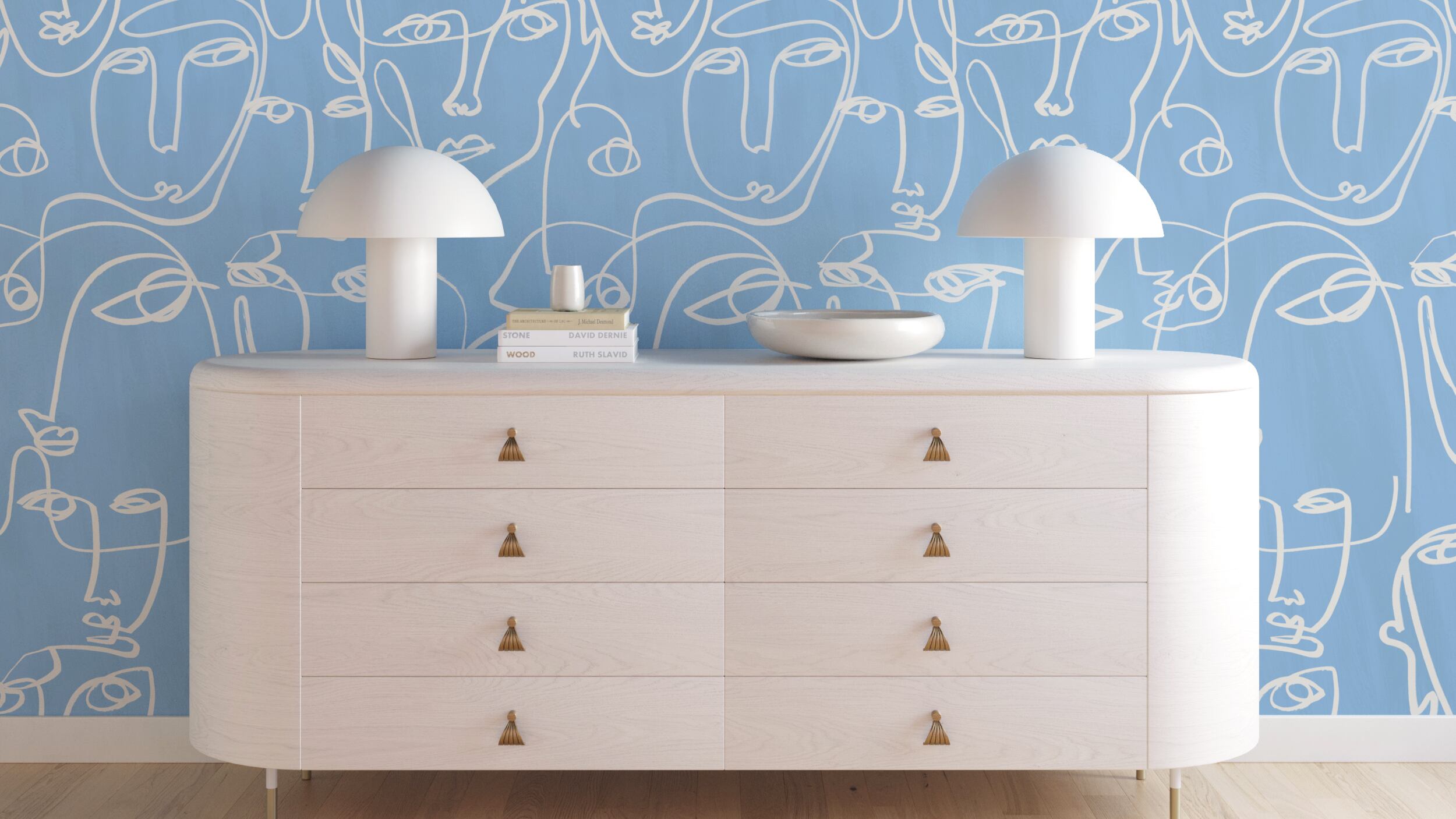Welcome home to your new beige box! If you just signed a lease on a rental, you’re probably eager to start adding your own personal touches and vibe to the space. But before you pop open the paint cans or break out the hammer, it’s smart to explore ways to personalize without getting into a long-term standoff with your landlord. Your challenge is to work every surface to create a visual story of how you’d like to feel at home. Here are some ways, from easy to more involved, to make it happen.
Paint, but with caution
If your instinct upon moving into a rental is to paint it black—or red, or purple, or whatever your bold color of the moment—there are some legal ramifications to picking up the paintbrush. Interior painting is usually not specifically addressed by rental agreements, says lawyer Troy Pickard of Portland Defender, who represents tenants in disputes with landlords. But there is typically a provision that says a tenant may not make any major structural changes to the home without the landlord’s written permission—and that includes painting. So get permission to paint in writing, and communicate with your landlord about what colors you’d like to use (darker colors are harder to paint over). “Hiring a professional painter may be a wise idea,” Pickard says. “I have seen many tenants make things more expensive for themselves by trying to handle painting and paint touch-ups on their own.”
Rethink wallpaper
Love the look of wallpaper but are turned off by its permanency? Any room that doesn’t get a lot of moisture would work with peel-and-stick wallpaper, says Bree Scott, the designer behind Drop It Modern, a woman-owned wallpaper business based in Portland. Scott, known best for her large-scale graphic Femme design depicting a line drawing of a face, recommends going with something on a large scale. “Bold and busy makes a really big impact,” Scott says. “Wallpaper is really about dialing in a feeling you want to evoke.” To apply, recruit your favorite person and, for one room, spend an afternoon lining up the paper carefully with your trims and corners. Be sure to follow all the directions—wall prep is a must. Then, when you’re ready to move out, peel it off, just like a sticker.
Find your treasure
Unique objects and small collections are a great way to inject some charm and personality to a space. “Our objects are what make our places unique,” says Colleen Mote, the stylist behind Mote Studio. “You should buy whatever makes your heart sing, and ideally, you should make the experience of acquiring them part of your story.” Every surface is fair game for your beloved things—bookshelves, coffee tables, side tables, and your vertical surfaces. Even your grandma’s egg beater becomes a sculpture when you install it on your wall. For photos, postcards, or ticket stubs, hang from an Ikea curtain wire, or pin to a giant corkboard. Create a music corner with your most-used instruments, build a tiny gallery wall (hung with Command Hooks or strips) in an unexpected place, or FrogTape Polaroid shots of your friends in a prominent place. Hold your best vinyl in a swanky box.
Right-size your furniture
Whether you’ve got giant spaces or are working with nooks and crannies, knowing the size of your space is a must before acquiring any furniture. Grab that measuring tape and take the specs on all the walls so you can draw up a floor plan. Be sure to include the sizes (width and height) of any doors you will be moving larger pieces through or windows you’d like to cover. There should be 30 inches of space between larger pieces of furniture to achieve the right flow. Consider using FrogTape to mark out on the floor where you want to place that vintage couch you spied at City Home. You can use designer ideas like floating your furniture away from the walls or adding a larger mirror to make the space appear bigger. No need to go small with your art. “Contrary to common belief, I actually like using oversized artwork in smaller spaces,” says Kelly Hill, a designer for City Home. “It adds character and a whole lot of drama.”
Add some life
With your main decisions behind you, it’s time to think about adding some life—like some houseplants to make your space feel more inviting, healthy, and invigorating. “Houseplants create relaxation and calm, creativity, inspiration, and a distraction from life’s challenges,” says Daphne Peters of Daphne’s Botanicals, a retail shop and plant consulting business with an in-store location in the Woodstock neighborhood. For great houseplants that will work in most interior environments, check out snake plants, pothos, spider plants, and peace lilies. Houseplant shops abound in Portland, as do specialty businesses like The Plant Doctors, Potted in Portland, and Pistils Nursery, all of which sell a variety of options as well as regular maintenance services for homes and businesses. Plants add life to any space, but could pose a danger to floors and trimwork in your rental. “I recommend people avoid planting a plant directly into a pot without holes,” Peters says. “Drainage or drip trays help to not get water on the floors.” If you’re the type who likes to water until it drains out the bottom, then it’s best to bring your plants into a bath or shower to water, let them drain there, and then put them back.
SEE MORE: This story appears in Nester magazine, WW’s guide to making a home. Nester is now available all over the city in shops and businesses. See a map of where Nester is distributed at wweek.com/nester-2025.

